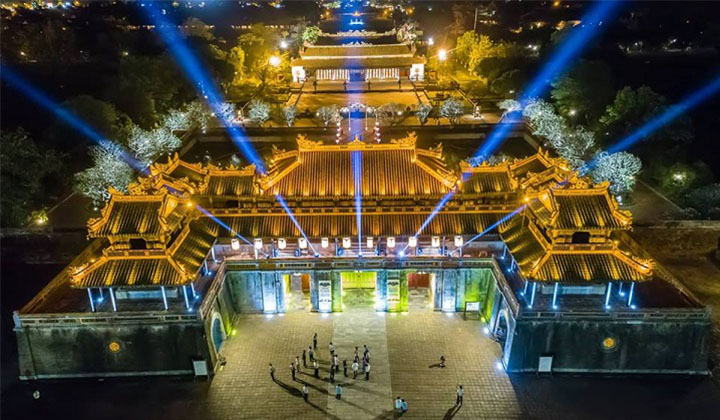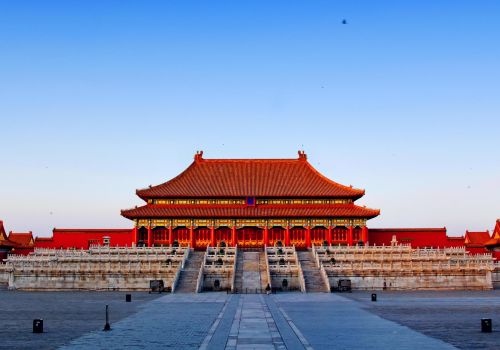The Imperial City of HUE - was once an enormous complex full of all the executive and bureaucracy you would expect from a country’s capital. It was enclosed within a square fortress, with each of the four walls about 2 kilometres long and a wide moat on the outside. The site was chosen by experts in ‘geomancy’ a spiritual science that looks for good omens in the natural landscapes. It was decided that the river and the mountains here would protect the city, because they looked like snakes and lions. All through this huge city were temples, palaces, offices, gardens, and residences. The most important bit was in the middle. It was called the Purple Forbidden City and it was where the emperor and his closest confidants lived and worked. Once, it would have been inaccessible to most people. Now, of course, we can all walk through it and see what remains.
The Imperial City is Hue's famous landmark. It is situated within the Hue Citadel. Here are located many temples for worshiping the deceased Emperors and members of their families.
Inside the Imperial city was built the Forbidden Purple City where only members of the royal family were allowed. It's located on the northern bank of Huong River (the Perfume River), turning South with total land area of 520 ha. The place was made UNESCO Site in 1993 with the remained buildings being actively restored and preserved after the destruction from the Vietnam War.
It is a huge complex covering a large area and comprising three circles of ramparts, the Hue Capital Citadel, the Royal Citadel and Forbidden Purple City. It was said to be protected by the two sand dunes on the Perfume River, as "dragon on the left, tiger on the right".
The Imperial City is located in the centre of the Citadel, where the highest offices of Vietnam's feudalism were established and the sanctums honouring the cult of decreased Emperors.

Related Posts

.jpg)





